The Angiogenesis Inhibitor ALS-L1023 from Lemon-Balm Leaves Attenuates High-Fat Diet-Induced Nonalcoholic Fatty Liver Disease through Regulating the Visceral Adipose-Tissue Function
- PMID: 28420164
- PMCID: PMC5412430
- DOI: 10.3390/ijms18040846
The Angiogenesis Inhibitor ALS-L1023 from Lemon-Balm Leaves Attenuates High-Fat Diet-Induced Nonalcoholic Fatty Liver Disease through Regulating the Visceral Adipose-Tissue Function
Abstract
Similar to neoplastic tissues, growth and development of adipose tissue are thought to be angiogenesis-dependent. Since visceral adipose tissue (VAT) is associated with development and progression of nonalcoholic fatty liver disease (NAFLD), we hypothesized that angiogenesis inhibition would attenuate obesity-induced NAFLD. We fed C57BL/6J mice a low-fat diet (LFD, chow 10% kcal fat), a high-fat diet (HFD, 45% kcal fat) or HFD supplemented with the lemon-balm extract ALS-L1023 (HFD-ALS) for 15 weeks. ALS-L1023 reduced endothelial cell-tube formation in vitro. HFD increased VAT angiogenesis and induced weight gains including body weight, VAT mass and visceral adipocyte size compared with LFD. However, HFD-ALS led to weight reductions without affecting calorie intake compared with HFD. HFD-ALS also reduced serum ALT and AST levels and improved lipid metabolism. HFD-ALS suppressed steatosis, infiltration of inflammatory cells, and accumulation of collagen in livers. HFD-ALS modulated hepatic expression of genes involved in lipid metabolism, inflammation, fibrosis, antioxidation, and apoptosis. Concomitantly, analysis of VAT function revealed that HFD-ALS led to fewer CD68-positive macrophage numbers and lower expression of inflammatory cytokines compared with HFD. Our findings show that the anti-angiogenic herbal extract ALS-L1023 attenuates NAFLD by targeting VAT during obesity, suggesting that angiogenesis inhibitors could aid in the treatment and prevention of obesity-induced human NAFLD.
Keywords: Melissa officinalis; herbal medicine; visceral adipose inflammation; visceral obesity.
Conflict of interest statement
The authors declare no conflict of interest.
Figures
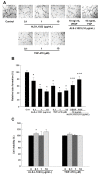
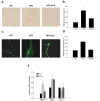
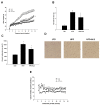
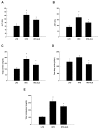
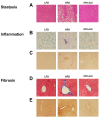


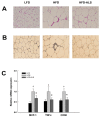
Similar articles
-
The lemon balm extract ALS-L1023 inhibits obesity and nonalcoholic fatty liver disease in female ovariectomized mice.Food Chem Toxicol. 2017 Aug;106(Pt A):292-305. doi: 10.1016/j.fct.2017.05.059. Epub 2017 May 29. Food Chem Toxicol. 2017. PMID: 28571771
-
The anti-angiogenic herbal extract from Melissa officinalis inhibits adipogenesis in 3T3-L1 adipocytes and suppresses adipocyte hypertrophy in high fat diet-induced obese C57BL/6J mice.J Ethnopharmacol. 2016 Feb 3;178:238-50. doi: 10.1016/j.jep.2015.12.015. Epub 2015 Dec 15. J Ethnopharmacol. 2016. PMID: 26702505
-
The herbal extract ALS-L1023 from Melissa officinalis alleviates visceral obesity and insulin resistance in obese female C57BL/6J mice.J Ethnopharmacol. 2020 May 10;253:112646. doi: 10.1016/j.jep.2020.112646. Epub 2020 Feb 3. J Ethnopharmacol. 2020. PMID: 32027997
-
The Connection between MicroRNAs from Visceral Adipose Tissue and Non-Alcoholic Fatty Liver Disease.Acta Medica (Hradec Kralove). 2021;64(1):1-7. doi: 10.14712/18059694.2021.1. Acta Medica (Hradec Kralove). 2021. PMID: 33855952 Review.
-
Integrated transcriptomic landscape of the effect of anti-steatotic treatments in high-fat diet mouse models of non-alcoholic fatty liver disease.J Pathol. 2024 Mar;262(3):377-389. doi: 10.1002/path.6242. Epub 2024 Jan 5. J Pathol. 2024. PMID: 38180387
Cited by
-
Adipocytokine Regulation and Antiangiogenic Activity Underlie the Molecular Mechanisms of Therapeutic Effects of Phyllanthus niruri against Non-Alcoholic Fatty Liver Disease.Nutrients. 2018 Aug 9;10(8):1057. doi: 10.3390/nu10081057. Nutrients. 2018. PMID: 30096951 Free PMC article.
-
Ascorbic acid inhibits visceral obesity and nonalcoholic fatty liver disease by activating peroxisome proliferator-activated receptor α in high-fat-diet-fed C57BL/6J mice.Int J Obes (Lond). 2019 Aug;43(8):1620-1630. doi: 10.1038/s41366-018-0212-0. Epub 2018 Oct 3. Int J Obes (Lond). 2019. PMID: 30283077
-
Antiangiogenic Drugs in NASH: Evidence of a Possible New Therapeutic Approach.Pharmaceuticals (Basel). 2021 Sep 29;14(10):995. doi: 10.3390/ph14100995. Pharmaceuticals (Basel). 2021. PMID: 34681219 Free PMC article. Review.
-
Lemon Balm Extracts Prevent Breast Cancer Progression In Vitro and In Ovo on Chorioallantoic Membrane Assay.Evid Based Complement Alternat Med. 2020 Apr 14;2020:6489159. doi: 10.1155/2020/6489159. eCollection 2020. Evid Based Complement Alternat Med. 2020. PMID: 32351599 Free PMC article.
-
Anti-Angiogenic Effects of Natural Compounds in Diet-Associated Hepatic Inflammation.Nutrients. 2023 Jun 14;15(12):2748. doi: 10.3390/nu15122748. Nutrients. 2023. PMID: 37375652 Free PMC article. Review.
References
-
- Folkman J. Tumor angiogenesis. Adv. Cancer Res. 1985;43:175–203. - PubMed
MeSH terms
Substances
LinkOut - more resources
Full Text Sources
Other Literature Sources
Medical
Miscellaneous

